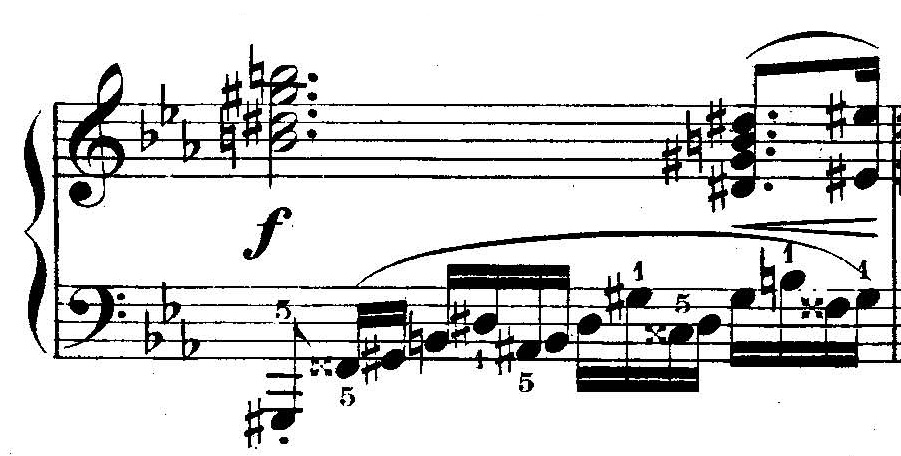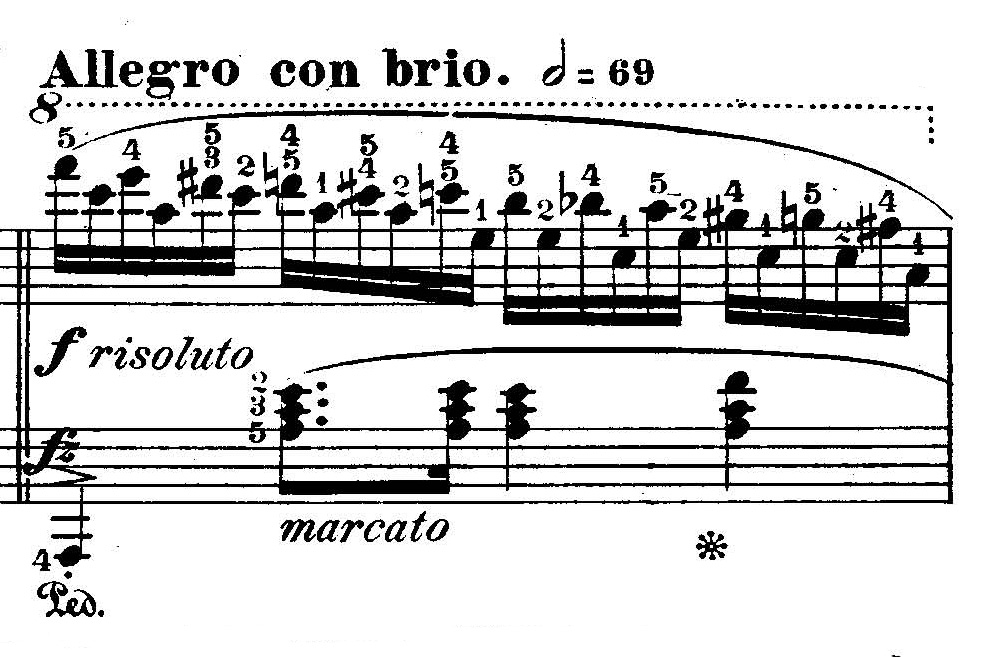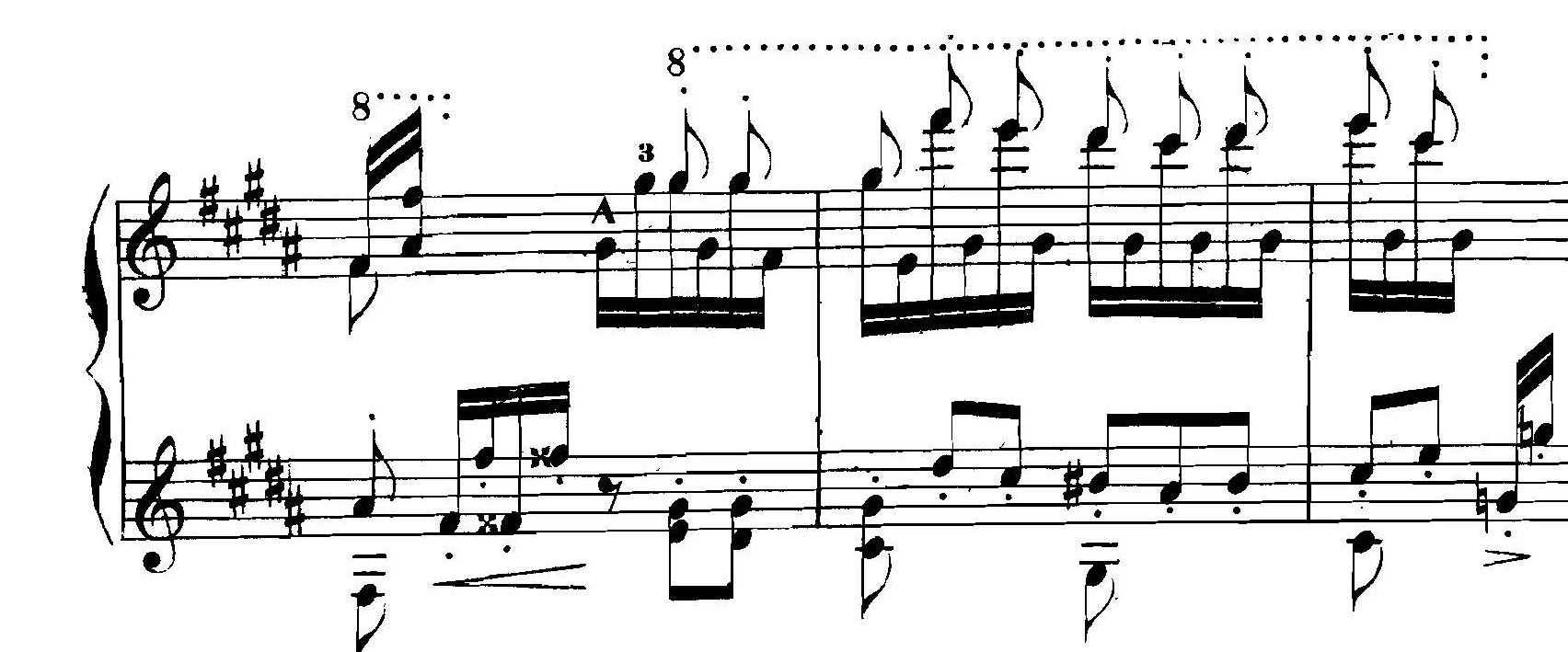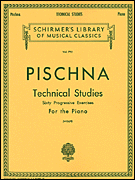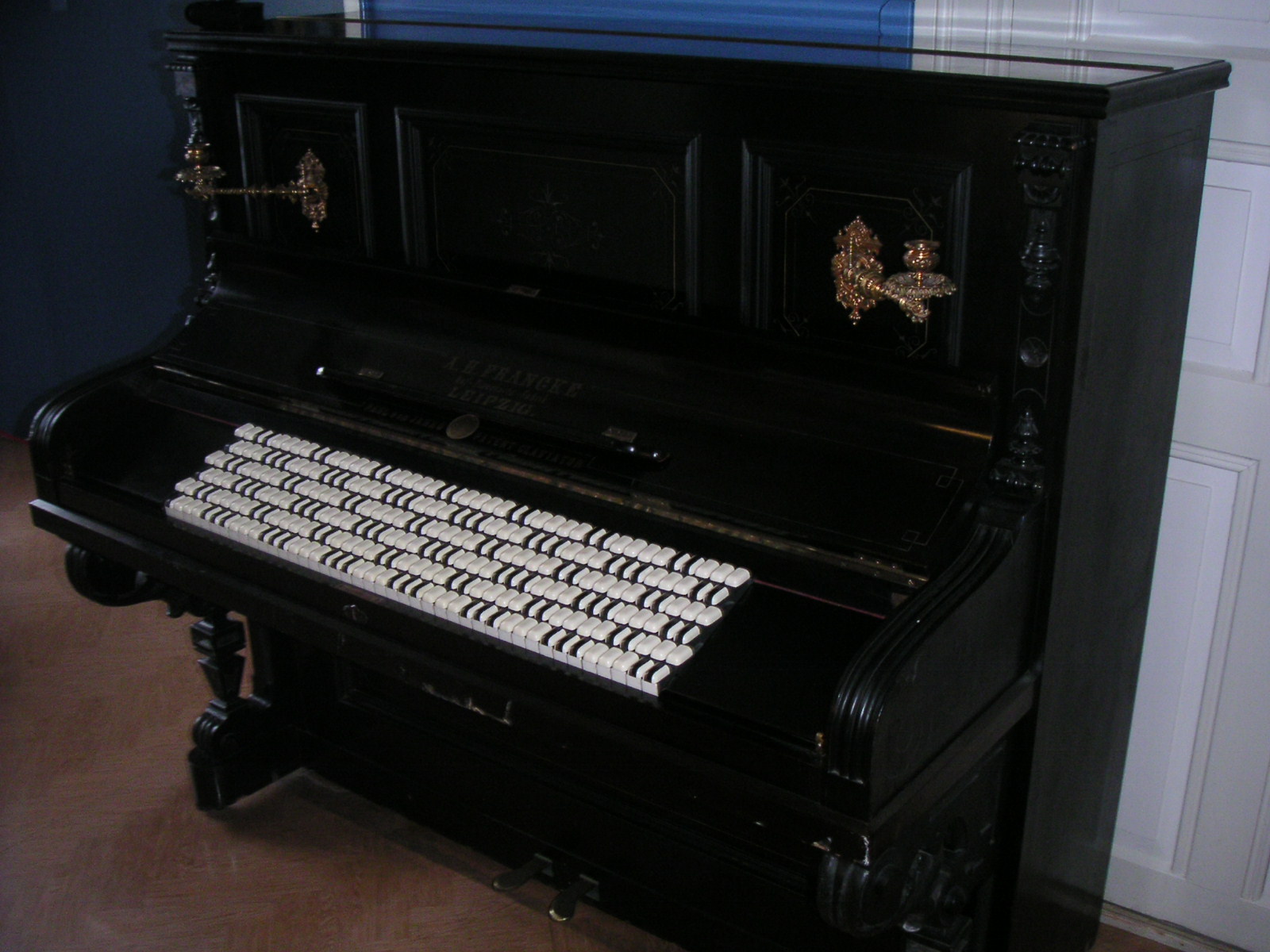
YouTube Videos Blog Photo Gallery
|
 Blog for 13 January 2010 Fundamentals of
Piano Technique. Part 2 Piano playing certainly involves more than mere technique: It is an amalgam of technique, musicality, interpretation, creativity, emotion, artistry, intelligence, logic, aesthetics, and memory among other things. This article, however, will deal only with technique without implying a greater or lesser importance than the items listed above. Of course, without out a solid foundation of technique, none of the other items can be manifested. Here then are a few of the goals the pianist should bear in mind when developing his technique: 1. Equalize the distribution of fine motor skill between the left and right hands. 2.
Develop and strengthen the muscles that move the
fingers of both hands equally. 3.
Develop and strengthen the muscles that move the
fourth and fifth fingers in particular. 4. Develop and improve finger independence. 5.
Increase and develop proprioception between the body
and keyboard. 6. Develop the facility of the thumbs to fold deeply under the palm quickly and accurately in order to facility the change of hand positions along the keyboard. 7. Improve the shape of the fingers as they play and correct the way the fingers make contact with the keys. 1. Equalize the
distribution of fine motor skill between the left
and right hands. Every pianist must work toward
becoming ambidextrous at the piano keyboard.
Otherwise, it would be frightfully difficult for the
same pianist to play both the Étude
opus 10 number 12
2. Develop and
strengthen the muscles that move the fingers of both
hands equally. The anatomy of the hand is quite wonderfully complicated, but for the purposes of playing the piano keyboard, we are chiefly interested in three planes of motion for the fingers: up, down, and sideways. The daily practice of scales and arpeggios will aid greatly in this goal. Of course, scales, chords, and arpeggios are not only the means of attaining the goal, they are, in fact, the goal. In the world of piano music, scales, chords, and arpeggios are the basic building blocks of composition. The fingers of the hand must instantly be able to assume the correct position for the execution of any chord or arpeggio. 3. Develop and
strengthen the muscles that move the fourth and
fifth fingers in particular. While it is true that no two pairs of hands are identical, one feature common to all humans is the inequality of the fingers. Playing the piano would be much easier if all five fingers had the same anatomy, muscular investment, length, size, strength, and high level of motor skills. Sadly, because this is not the case, the pianist must work hard over the course of many years and even decades to improve the strength, dexterity, and motor skills of the inherently smallest and weakest two fingers: the fourth and fifth fingers. The fourth finger is especially handicapped by an inability to lift much higher than the height of the top of a black key. Compare this with the index finger, which can rise significantly higher above the height of the top of a black key. There are anatomical reasons why the index finger can be lifted higher than the fourth finger, nevertheless, through hard work and discipline, the height to which the fourth finger can normally be raised can be increased. Tangentially, it may be useful to point out that while most people will automatically assume that the most important direction for a finger to move is down – in order to push a key down, it is of equal and perhaps greater importance that the fingers be able to swiftly lift up to release the key and be ready to strike the next key, and, just as important, get out of the way. Fingers that do not lift up fast enough to release the key will invariably strike neighboring keys by accident. No amount of exercise or diligence will make the fourth and fifth fingers as strong and magnificently endowed as the index finger, but that is hardly a reason to avoid such exercise. As I said above, perfection of the fourth and fifth fingers is impossible, but they can nevertheless be made much stronger and agile than they are in their normal state. Indeed, it is largely unnecessary for the fourth and fifth fingers to be as strong and agile as the index finger because there are no pieces (that I know of) in the piano literature that require them to be. The best composers for the piano were pianists themselves. They understood the limitations of the human hand and wrote for it accordingly. Still, much of the most exciting and beautiful sections of the piano literature are only within the reach of those pianists who conscientiously, methodically, and diligently work to develop the fourth and fifth fingers. 4. Develop and
improve finger independence. This is a neurological
rather than muscular matter. The term “finger independence”
does not mean what most people think it means. Anyone
who tries to play the exercises in the first volume of
Isidore Philipp’s Exercises for
Independence of the Fingers for the first time
will soon discover to his horror that many of these
seemingly simple exercises are impossible to play. The
surprising reason for this inability is that the brain
of the average human does not know how to move the
fingers independently to the extent required by
advanced piano literature. The requisite neurological
anatomy is present in a rudimentary or atrophied
state, but with great discipline and patience, it can
be developed. I frequently liken this situation to
that of the physiotherapeutic interventions intended
to help a stroke victim recover motor skills lost to
paralysis.
Most people imagine that they can move all their fingers independently, but it is only when one plays Philipp’s exercises that the true situation is revealed. Philipp’s method is to have one or more fingers holding down keys while the remaining fingers move up and down. Philipp goes through every possible finger combination in order to reveal where the “situational paralysis” lies. When I first started using Philipp’s book, I too found that it was impossible to play some of the exercises. Playing the exercises one hand at a time made enabled me to lift and move the “paralyzed” fingers with my free hand the same way a physical therapist moves the limbs of a paralyzed stroke victim in order to stimulate the brain to build new neural pathways to regain control of the limb. For weeks, I would go through the seemingly futile exercise, frequently feeling that it was a hopeless effort and that I would never be able to move my fingers independently as prescribed by Philipp. Then, slowly the “paralyzed” fingers began to move by themselves. I no longer had to lift them up and down with my other hand. At first, the movements of the “paralyzed” fingers were halting and uncoordinated. Later, the movement became smoother and more refined. Eventually, I attained full finger independence and was able to use the very same Philipp exercises for the very worthy aim of developing the muscles governing the fourth and fifth fingers. 5. Increase and
develop proprioception between the body and
keyboard. Proprioception, according to my usage here, is the sense of the relative position of parts of the body in relation to neighboring parts of the body and in relation to the individual registers and keys of the piano keyboard. This too is a neurological process. Just as people with good proprioception can accurately touch any part of their body without being guided by their eyes, a pianist must develop the ability to reach out and touch any desired key or group of keys without relying on his eyes to guide his hand. The keyboard must therefore become part of the body. Most pianists possess good proprioceptive skills, but developing proprioception further will enable pianists to make great jumps across the span of the keyboard with greater accuracy. One of Liszt’s masterpieces, “La Campanella,” is a notorious example of a piece containing great leaps that must take place at lightening speed.
In short, I relate this to the necessary ability of the hands and fingers to assume the correct shape to play any chord or interval any place on the keyboard prior to striking the keys without the aid of the eyes. For instance, the hand must instantly be able to adjust the distance between the outstretched thumb and fifth finger to correspond exactly to the interval of an octave and be able to play that octave anywhere on the keyboard without visual assistance and without error. Without this ability, the famous “stride” left hand jumps between low bass octave and tenor register chord, so characteristic of ragtime, would be impossible. This proprioception is what makes it possible for blind men to play the piano. George Shearing and Art Tatum did not need eyes to guide their fingers to the right keys, and neither should any pianist. This is not a matter of bravado posturing. It is a practical matter. The eyes simply cannot move fast enough to guide the aim of the fingers, especially in fast, contrapuntal, contrary motion passage work. Unless one develops proprioception at the keyboard, it is impossible to play pieces with large register jumps such as Liszt’s masterpiece La Campanella. Even for close passage work without major jumps, the fingers need to know how to adjust their spacing in order the hit the right notes. This can be developed through the use of exercises such as arpeggios, double octaves, and especially exercises designed to increase the accuracy of jumps. 6. Develop the
facility of the thumbs to fold deeply under the palm
quickly and accurately in order to facility the
change of hand positions along the keyboard. Unlike most other non-keyboard instruments whose efficient design does not require much hand movement, the piano keyboard with its eighty-eight keys requires that the hands move rather great distances. In common passage work involving scales and arpeggios, one changes the position of the hands by folding the thumb under the hand so that it reaches out to the next “anchor note,” finds it, and locks itself in position so that the rest of the hand can move over the thumb such that the wrist does not twist and such that other four fingers remain relatively parallel with the keys. At all costs, we want to avoid twisting the wrist because it turns the fingers at a diagonal to the keys – a position that seriously impedes their ability to strike the keys accurately. It is of critical importance
that this means of hand locomotion be perfected. At
first, the act of folding the thumb under the hand is
uncomfortable. It requires that the sinews be
stretched beyond the comfort level of the average
human hand. Scales and arpeggios are excellent
exercises for this. Josef Pischna’s wonderful and
indispensable work 60 Piano Exercises
contains many useful exercises designed specifically
to improve the folding under of the thumb. 7. Improve the
shape of the fingers as they play and correct they
way the fingers make contact with the keys. The fingers play best, most accurately, and with the greatest control if they are parallel with the keys, curved, and poised to strike the keys with the fleshy part of the finger tip such that the final finger digit is at a roughly 60 degree angle to the keyboard. The thumb is another matter entirely. It rarely gets to play with the full fleshy pad of its finger tip and is instead required to strike the key with the thin edge of the fleshy pad on the side of the thumb. Untrained and carelessly self-taught piano players (note that I did not say “pianists”) without discipline frequently play with the most appalling finger positions. This is probably because training the fingers to adopt the correct positions takes lots of hard work and practice. Pianists should use their daily practice of scales to monitor and improve the position of the fingers, to work on perfecting the lovely curve of the finger and perfect striking position of the finger tip. This is not a matter of pedantic rule making for the sake of making rules. I do not believe in making rules. Instead, I believe in doing what works best and following the course of action that yields the most satisfying, beneficial, and profitable results – no matter how long it takes to achieve this end. Naturally, when playing real piano pieces, a variety of hand and finger positions and angles are required. Indeed, because of the design of the hand and the way the fingers fan out of the palm, it is nearly impossible that the fingers will be parallel when playing chords or passages using many fingers in one area of the keyboard. The hands will always be twisting this way or that in order to play a certain chord or execute a certain passage. Nevertheless, in most cases, standard arpeggios and scales are played best when the fingers are parallel to the keys. In conclusion, let me stress
that playing the piano proficiently is very hard work.
The piano keyboard was not designed by master
instrument builders, as was the case with such modern
instruments as the saxophone or three-valve trumpet.
The piano keyboard is the result of historical
accident originating in the primitive system of levers
used for simple organs of the late classical era and
dark ages. In short, the keyboard was not designed for
the human hand. Technological advancements such as the
Jankó
keyboard
seemed doomed in their bid to compete with the
traditional keyboard. Perhaps we are strangely fortunate that we are stuck with the traditional keyboard. All the years and hard work developing the hand and fingers to play it have the additional side benefit of developing both hemispheres of the brain beyond the level achieved by even the most accomplished and smartest humans. Scientists have already documented the tremendous and long-lasting cognitive benefits of learning music. The enhanced motor skills resulting from disciplined piano practice can only increase and complement these benefits. Frederick Hodges This essay is copyrighted and may not be reproduced without permission. 13 January 2010 |
